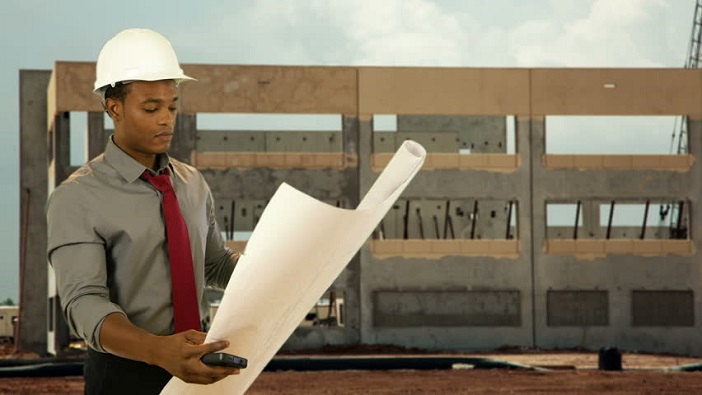Architect Interview Questions You Should Be Prepared to Answer
Architect Interview Questions You Should Be Prepared to Answer
Blog Article
Recognizing the Diverse Career Paths Available for Aspiring Architect
As an aspiring Architect, you have a world of profession paths waiting for you. Whether you're attracted to standard style or the nuances of lasting layout, there's a particular niche that lines up with your passions.
Standard Style: Creating Structures and structures
Conventional design focuses on making structures and structures that blend performance with visual allure. Your styles can mirror social heritage, showcasing neighborhood customs while meeting modern-day demands.
You'll establish skills in drafting, model-making, and site analysis, enabling you to visualize and connect your ideas successfully. Involving with customers, you'll require to understand their vision and convert it into feasible styles.
In addition, constructing codes and sustainability practices are crucial in your job, guaranteeing your frameworks are risk-free and eco friendly. As you expand in your profession, you'll discover possibilities in property, industrial, or also restoration jobs, each offering distinct challenges. Embracing typical design paves the means for a fulfilling occupation that pays tribute to the past while shaping the future.
Urban Planning: Forming Neighborhoods and Public Spaces
As a hopeful Architect, you can play a vital duty as a city coordinator, changing exactly how neighborhoods function and connect. By utilizing community engagement strategies, you'll assure that locals have a voice fit their atmosphere. Plus, incorporating lasting style concepts will certainly help produce rooms that not only fulfill today's needs however also protect the future.
Function of Urban Planners
While many might think of designers as the sole visionaries behind buildings, metropolitan organizers play a necessary duty in forming the more comprehensive landscape of communities and public spaces. By teaming up with various stakeholders, you'll aid develop parks, transport systems, and household locations that promote social interaction and access. Your proficiency in spatial layout and community characteristics enables you to envision future growth while preserving social heritage.
Neighborhood Engagement Methods
Efficient community engagement techniques are crucial for city planners to assure that the voices of residents are heard and valued in the planning procedure. To foster significant dialogue, you need to prioritize open forums and workshops where community members can share their concepts and worries. By proactively integrating and listening feedback, you'll create areas that show the area's requirements, inevitably leading to more lasting and effective metropolitan environments.
Sustainable Style Concepts
When designing city areas, integrating sustainable style principles is crucial for producing environments that prosper both ecologically and socially. Think about incorporating eco-friendly areas, like parks and gardens, to enhance biodiversity and enhance air top quality.
Creating with water conservation in mind is additionally vital-- think about rainfall yards and permeable surface areas to handle stormwater. Including area members during the planning procedure assurances that the spaces you develop satisfy their requirements and urge social communication. By welcoming these concepts, you'll add to lively, sustainable city landscapes that benefit every person.

Landscape Design: Creating Sustainable Outside Atmospheres
As you explore landscape style, you'll discover vital layout principles that produce practical and stunning outdoor areas. Lasting practices play a vital role in making certain these settings thrive while reducing environmental effect. And also, you'll discover a selection of job opportunities that enable you to make a real difference in exactly how people connect with nature.
Design Principles in Landscape
Comprehending layout principles in landscape design is important for developing lasting outside environments that integrate with nature. You'll require to consider components like scale, equilibrium, and proportion to guarantee your designs feel natural and welcoming. Incorporating indigenous plants not just enhances biodiversity however also reduces water use, making your landscape durable. Consider the flow of room and just how individuals connect with it; pathways and seating areas ought to welcome exploration and relaxation. In addition, take notice of seasonal changes, creating with materials that complement the environments year-round (Architect). By prioritizing sustainability and looks, you can create exterior areas that enhance the neighborhood and advertise well-being. Welcoming these concepts will set a solid foundation for your profession in landscape architecture.
Sustainable Practices Summary
Sustainable methods in landscape architecture not only concentrate on appearances yet also prioritize environmental health and wellness and resource conservation. By integrating native plants, you improve biodiversity and lower the need for chemical plant foods and pesticides. Applying reliable watering systems assists preserve water and minimizes drainage, protecting nearby environments. You can create rooms that advertise dirt health and wellness, such as exercising and utilizing natural products permaculture principles. In addition, incorporating environment-friendly framework, like rainfall yards and permeable pavements, aids in stormwater administration and decreases city warm. You add to a healthier planet and give rooms that cultivate area link when you develop outdoor environments with sustainability in mind. Inevitably, these methods guarantee your styles profit both individuals and the setting for many years ahead.
Profession Opportunities Exploration
With a strong structure in sustainable practices, landscape architecture provides a selection of occupation paths that enable you to make a significant effect on the atmosphere. You can function as a landscape designer, creating visually pleasing and functional outdoor areas, or concentrate on environmental reconstruction, helping to revive broken ecosystems. Urban organizers commonly team up with landscape architects to develop green spaces in metropolitan setups, improving city livability. If you're enthusiastic about education and learning, think about coming to be a landscape architecture educator, motivating future generations. In addition, you may collaborate with nonprofits concentrated on environmental read more sustainability or participate in study to introduce new practices. Each path not only forms gorgeous environments yet likewise fosters a healthier world for future generations.
Sustainable Design: Focusing on Eco-Friendly Practices
As you explore your profession in style, embracing environmentally friendly methods can establish you apart in a competitive area. Sustainable design concentrates on producing structures that lessen ecological influence while improving owner well-being. By integrating renewable materials, energy-efficient systems, and sustainable structure strategies, you'll add to a greener future.
Start by getting understanding of environment-friendly certifications like LEED or BREEAM, which can bolster your qualifications. Take into consideration just how all-natural light, air flow, and thermal effectiveness can enhance layout. Collaborate with engineers and ecological experts to innovate services that lower waste and save resources.
Do not forget the significance of neighborhood involvement-- engaging regional stakeholders can influence designs that integrate with the atmosphere. As clients significantly prioritize sustainability, your proficiency in eco-friendly methods will not only attract projects however likewise accomplish your interest for accountable style. Embrace this crucial aspect of the career, and see your career grow.
Historic Conservation: Shielding and Recovering Social Heritage
While you commence on your building journey, take into consideration the vital role of historic conservation in maintaining our social heritage. This field concentrates on the defense and remediation of considerable structures, sites, and structures that tell the stories of our past. By engaging in historic conservation, you'll assist safeguard the building legacy that forms area identification.
As a historical conservation Architect, you'll assess historic importance and assess the problem of frameworks. You'll function very closely with conservationists and historians to guarantee authentic remediation techniques are used. This career path permits you to blend creative thinking with research study, enabling you to create solutions that respect original products and craftsmanship.
Your work not only contributes to sustainability by reusing existing buildings yet additionally fosters a feeling of pride here within neighborhoods. Accepting this path will aid you end up being a guardian of history, preserving the stories and appearances that enrich our lives.
Interior Style: Enhancing Indoor Spaces
Historic conservation and interior style both share a dedication to improving the built setting, however they focus on different elements. While historical preservation stresses maintaining a framework's historic and cultural value, indoor design zeroes in on enhancing indoor areas for performance and visual appeals.
As a hopeful Architect, you'll find that indoor architecture permits you to blend creative thinking with technical skills. You'll develop areas that not only look good yet also advertise convenience and performance. This field includes recognizing just how light, shade, and materials connect within a space, impacting mood and usability.
You'll service numerous tasks, from household homes to industrial offices, guaranteeing that each setting meets the needs of its occupants. By prioritizing customer experience, you can change insides into useful and inspiring areas, making a considerable effect on exactly how individuals communicate with their surroundings. Embrace the chance to enhance indoor settings and shape the means individuals live and function.
Industrial Style: Combining Capability With Looks
Industrial layout plays a necessary duty in producing products that perfectly blend looks with capability, guaranteeing that what you utilize daily is not just visually enticing however additionally functional. As a hopeful Architect, you might engage on your own in this area, concentrating on designing every little thing from furniture to customer electronic devices. Your work entails understanding customer requirements, materials, and making processes, allowing you to produce ingenious services that boost everyday experiences.
In industrial design, you'll often work together with engineers, marketing experts, and manufacturers, making certain that your styles are not just attractive but likewise feasible. You'll learn to stabilize kind and function, prioritizing usability without sacrificing design. By sharpening your skills in sketching, 3D modeling, and prototyping, you'll be well-equipped to bring your ideas to life. This career path uses a dynamic atmosphere where creative thinking fulfills usefulness, making it a rewarding choice for engineers thinking about forming the items of tomorrow.
Regularly Asked Inquiries
What Educational Accreditations Do I Need to Come To Be an Architect?
To end up being a designer, you'll need an expert level in design, normally a Bachelor's or Master's. Additionally, you'll need to complete a teaching fellowship and pass the Architect Registration Exam to practice lawfully.
Exist Accreditation Needs for Different Architectural Job Paths?
Yes, there're accreditation demands for numerous building courses. Architect. You'll require to pass exams, complete teaching fellowships, and occasionally go after specialized training, relying on your selected focus, like landscape style, city style, or historical preservation
What Software Abilities Are Crucial for Architects Today?

Just How Can I Gain Practical Experience While Examining Architecture?
You can acquire functional experience by interning at architectural companies, joining design competitors, offering for neighborhood projects, or working together with classmates on real-world jobs. These possibilities improve your abilities and build valuable links in the market.
What Task Opportunities Exist Outdoors Typical Style Firms?
You can explore numerous task possibilities outside traditional style firms, like metropolitan preparation, indoor design, landscape style, check here construction administration, realty growth, and even roles in sustainability consulting. Each offers distinct challenges and incentives.
Whether you're attracted to typical style or the nuances of lasting style, there's a particular niche that lines up with your interests.When making urban spaces, integrating sustainable layout principles is critical for developing atmospheres that thrive both environmentally and socially.As you check out landscape architecture, you'll find crucial layout concepts that create attractive and functional outdoor rooms.Recognizing design concepts in landscape design is vital for creating lasting exterior environments that integrate with nature.In commercial design, you'll usually collaborate with producers, designers, and marketing experts, making certain that your layouts are not only gorgeous but also viable.
Report this page